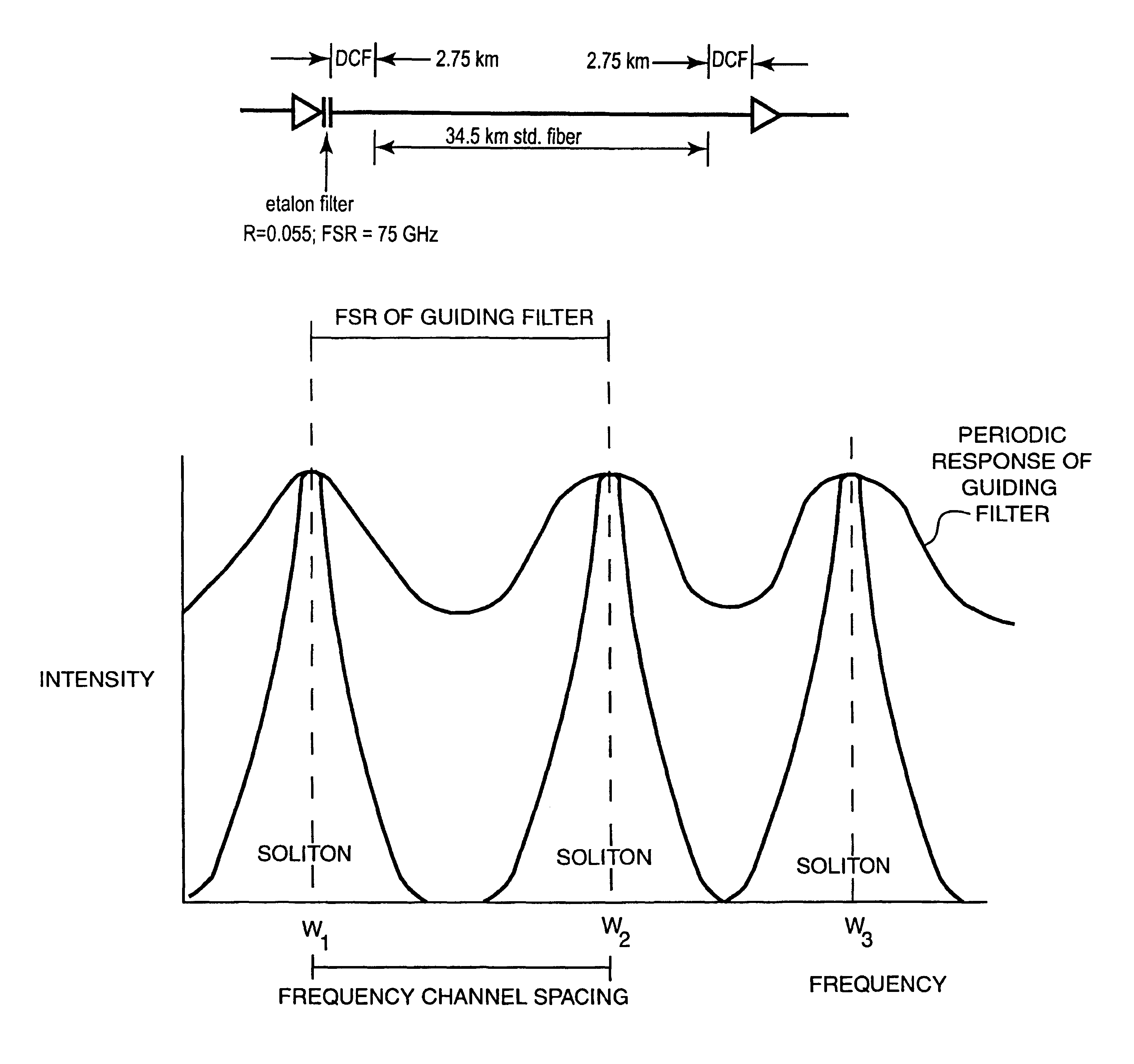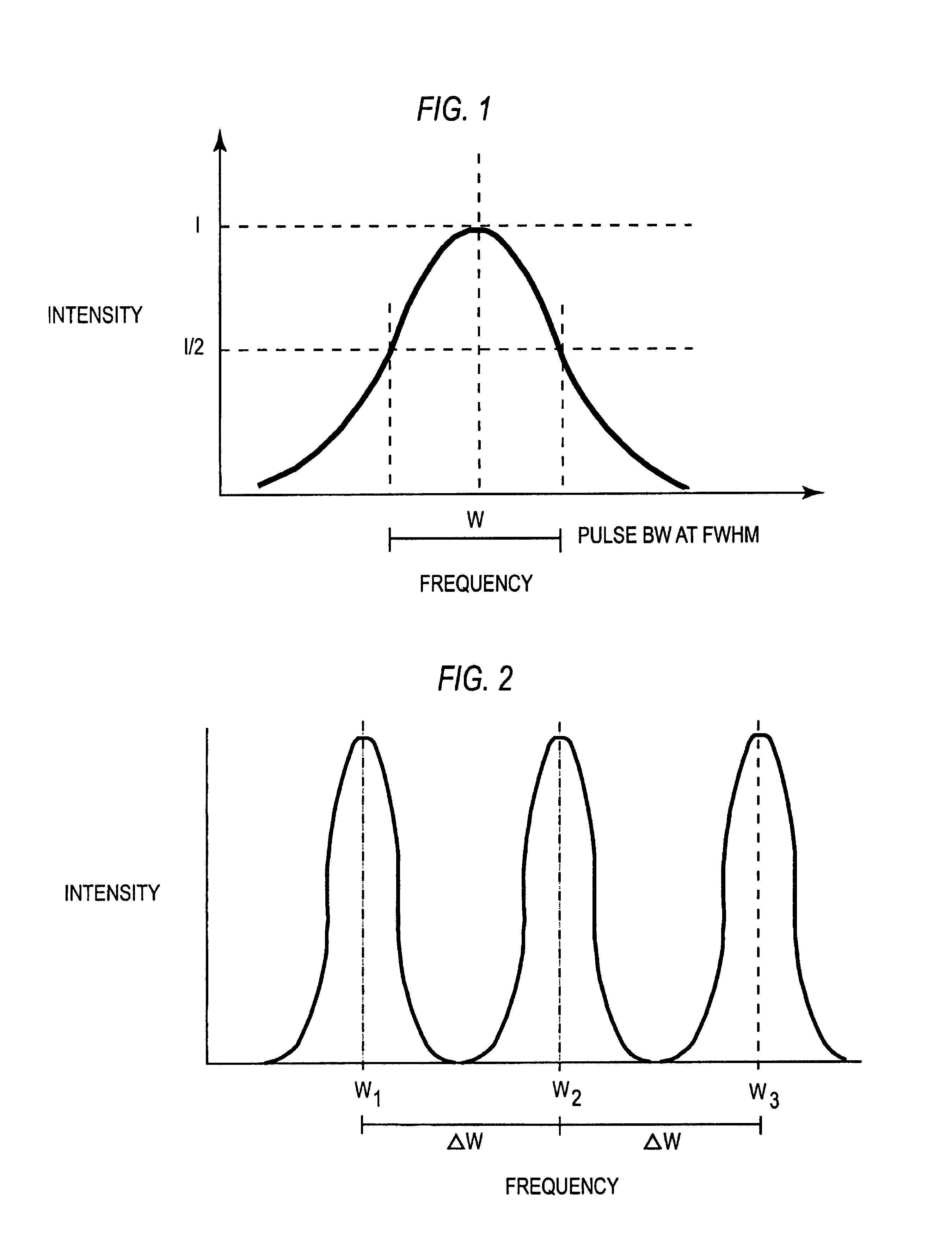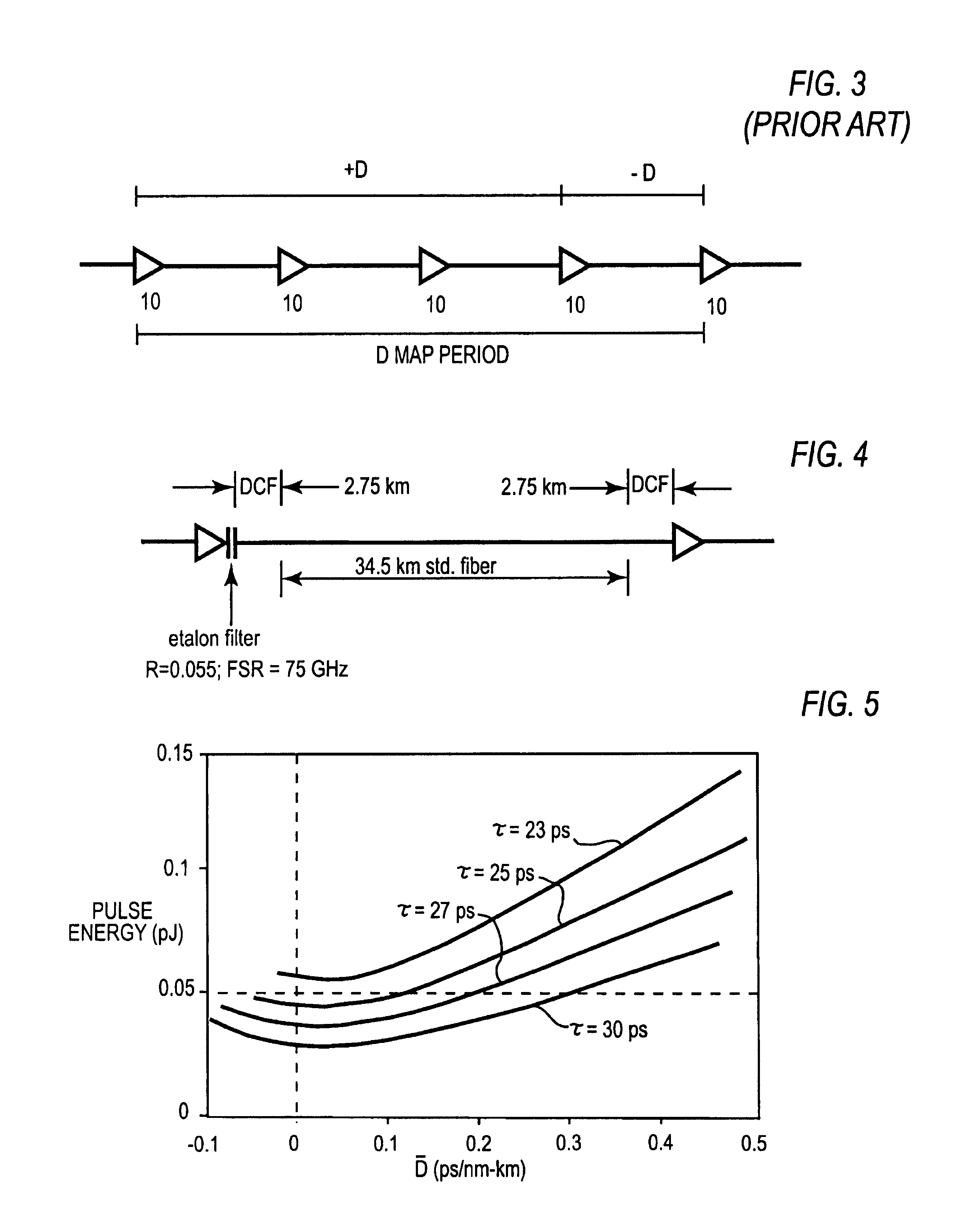Dispersion-managed soliton transmission system with guiding filters
a transmission system and filter technology, applied in electromagnetic transmission, electrical equipment, transmission, etc., can solve the problems of dispersion of light pulses, difficult to distinguish and detect the data represented by light pulses, and inability to broaden the pulse in tim
- Summary
- Abstract
- Description
- Claims
- Application Information
AI Technical Summary
Benefits of technology
Problems solved by technology
Method used
Image
Examples
first embodiment
[0045]FIG. 4 shows the present invention. The figure shows a D map period of a dispersion managed transmission line for use in propagating solitons. In the specific example shown, the D map period contains three segments of fiber—two segments of dispersion compensating fiber, or “DCF”, of 2.75 km length sandwiching one 34.5 km segment of standard fiber. The specific properties of each type of fiber is listed in Table 1. The number of fiber segments, the types of fiber used, and the lengths of these segments are not a limitation on the invention, however, and need not be the same as those shown in the figure. The only limitation in this regard is that the number of fiber segments, the type of fiber, and the lengths of the segments must be chosen in accordance with the principles of dispersion management. In other words, the number of fiber segments, the type of fiber, and the lengths of the segments must be chosen such that |Dloc| at any point along the D map is high, i.e., not less ...
third embodiment
[0064]As stated previously, the problem with such long amplifier spacings is that if standard power levels are used at the amplifiers the optical signal is too weak at the end of the period, and if power is increased so that the signal remains strong at the end of the period, the amplifiers become complex and expensive and the increased power constantly threatens to cause optical damage and greatly increases error producing non-linear effects. the invention solves this problem by providing a secondary amplification of the signal within the D map period through Raman amplification.
[0065]In Raman amplification, light of a higher frequency than the frequency of the signal pulses is injected into the optical fiber carrying the signal pulses. The higher frequency light here is known as the pump light. As the signal pulses pass through the area of fiber excited by the pump light, they extract energy from the pump light through what is known as the Raman effect. Thus, the signal pulses are...
PUM
 Login to View More
Login to View More Abstract
Description
Claims
Application Information
 Login to View More
Login to View More - R&D
- Intellectual Property
- Life Sciences
- Materials
- Tech Scout
- Unparalleled Data Quality
- Higher Quality Content
- 60% Fewer Hallucinations
Browse by: Latest US Patents, China's latest patents, Technical Efficacy Thesaurus, Application Domain, Technology Topic, Popular Technical Reports.
© 2025 PatSnap. All rights reserved.Legal|Privacy policy|Modern Slavery Act Transparency Statement|Sitemap|About US| Contact US: help@patsnap.com



